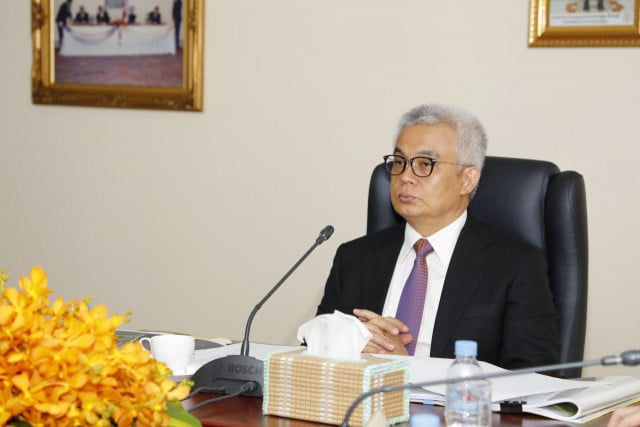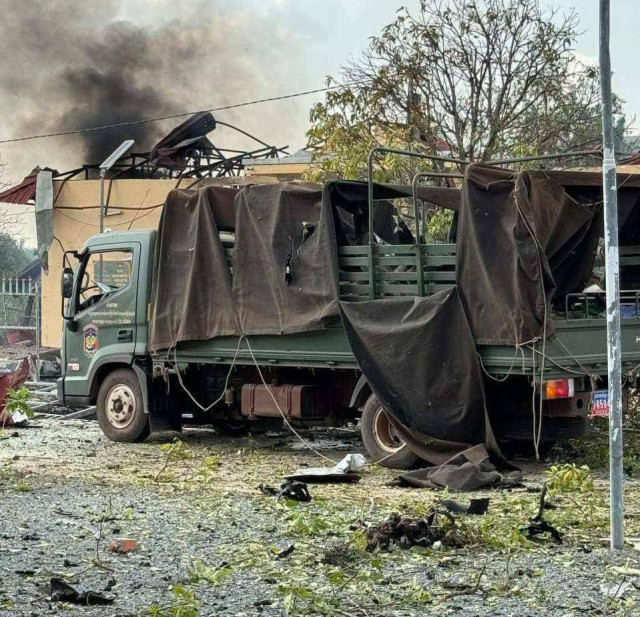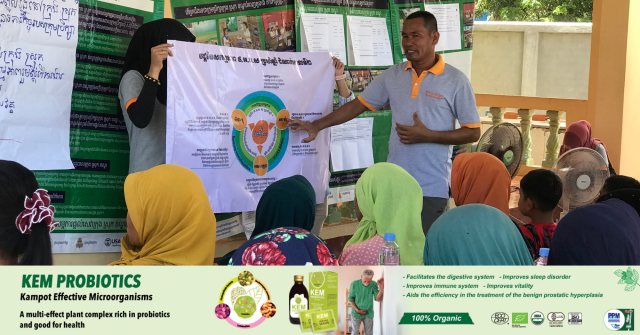Preah Ko Temple’s Odd-Looking Boxy Structure: Its Purpose still a Mystery

- By Sem Vanna
- July 1, 2023 1:00 PM
SIEM REAP – Among the temples of the Roluos group, Preah Ko is one of the oldest as well as a remarkable example of the early Angkorian brick temples.
Located midway between the Bakong temple, which is a temple-mountain built as a pyramid, and the 9th century Lolei temple, the site of Preah Ko is easy to reach through National Road 6, about 15 kilometres from Siem Reap city.
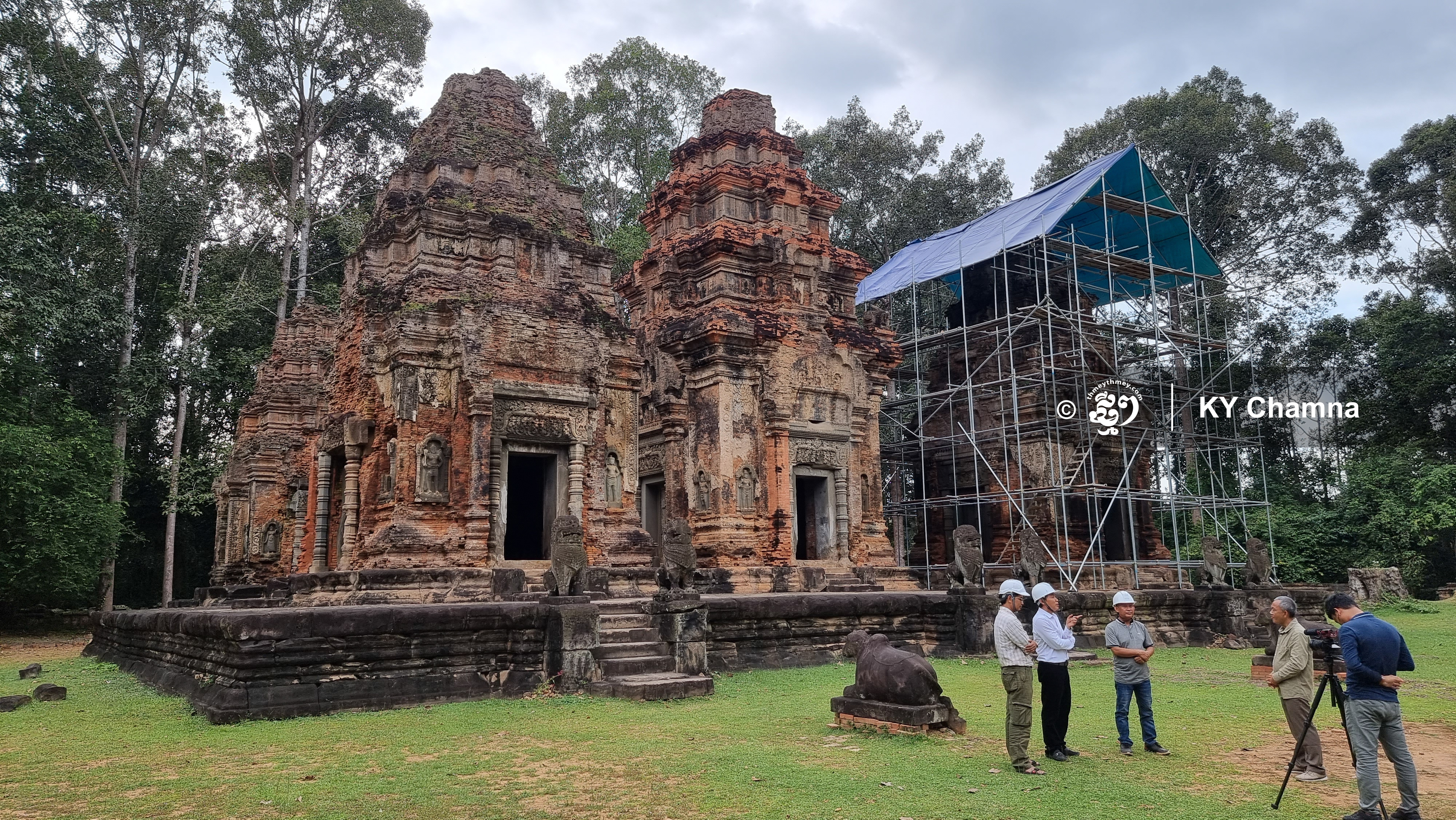
More than 200 years before Angkor Wat, King Indravarman I ordered in 879 the construction of the temple to be dedicated to the Hindu deity Shiva and serve as a memorial for his family members. It was given that name in honour of the three statues of Nandi, the bull guardian of Lord Shiva’s abode in Hindu mythology.
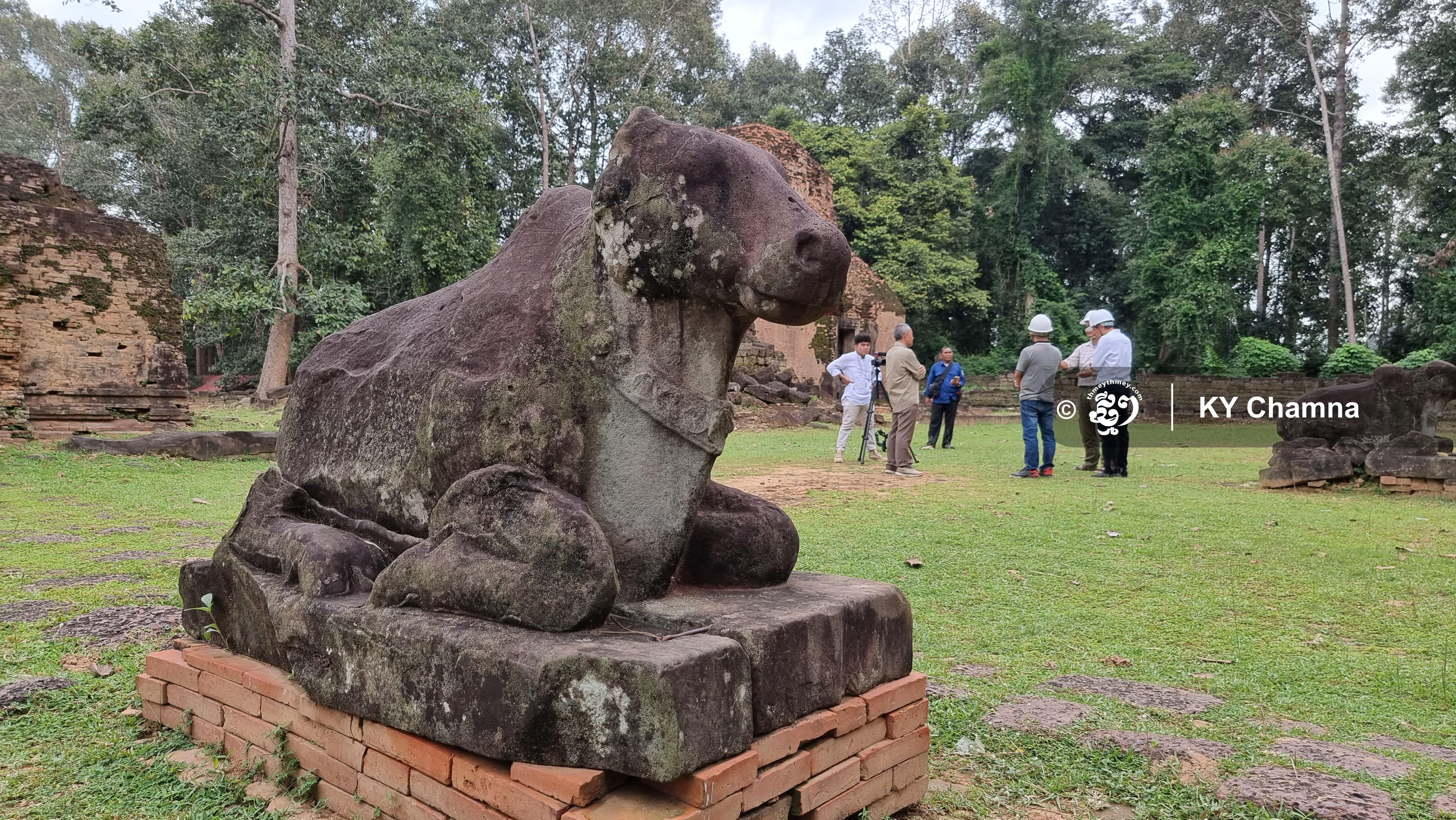
The temple consists of six brick towers facing east and placed in two rows of three towers. Each tower is set on a sandstone platform, and is dedicated to the ancestors and family members of King Indravarman I. The front centre tower is the tallest.
To read more about Preah Ko temple in detail, click here.
As an outcome of an early concept for the building, the temple stands out significantly from the others at the site. Built mainly of bricks with some sandstone pillars and windows, and laterite for the door frames, the front of the temple has three sandstone bulls facing the temple and a panoramic view that can be seen from the entrance. The artistry of this work from the 9th century and the quality of the sculptures reflect the brilliance and skills of the Khmer artists and architects of that era.

With its long row of sculptures of divine figures, the original purpose Preah Ko's boxy buildings remains unclear although the older temple Khnar Sen Keo in Preah Vihear province may have offered some clues. On the doorframe of Khnar Sen Keo, a word written in Sanskrit can be understood as pustakasrama or “building of books.”
“That is the only evidence we have found so far,” said Khiev Chan of the APSARA National Authority, the government agency that manages the Angkor Archeological Park. The French researchers of long ago had called such buildings “bibliotheques,” that is, libraries, he said, since they had no other information.
Some people have suggested that Preah Ko might have been a crematorium but, Chan said, no evidence has been found to reinforce that theory.
_1688142966.png)
Attempting to identify the livelihoods and activities of people around the temple may provide information on the temple. “Temples were not built for people to live in,” Chan said. They were sacred and servants were needed to take care of the place.” A great number of men and women caretakers, tasked with different duties at different times of the day and year, were recruited to maintain them. Therefore, this boxy structure might just have been a storehouse or a granary.
To watch more about Preah Ko temple in detail, click here.
In spite of all these educated guesses, the real purpose of the building remains unclear. “Well, I cannot say for certain,” Chan said. “I just outline possibilities based on evidence.”

Today, the restoration of Preah Ko is still ongoing due to extensive damage caused by the elements in some parts of the temple in the course of the centuries. Workers must track down broken-off stone fragments in and around the temple or mold others in the shape of the original ones to fit them in.
Although the temple is under restoration, visitors keep on touring the site every day. While surrounded by a densely populated village, Preah Ko offers them a calmer atmosphere compared to the much larger temples such as the Bayon or Angkor Wat. And in the vicinity, visitors can enjoy local cuisine and shops where they can find paintings, stone sculptures and much more.
Written in Khmer for ThmeyThmey News, this article was translated by Luy Sirey Reaksa for Cambodianess.








